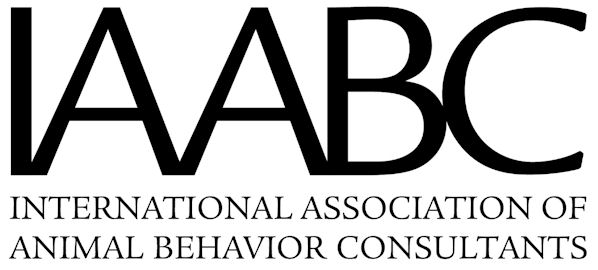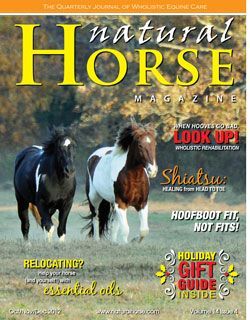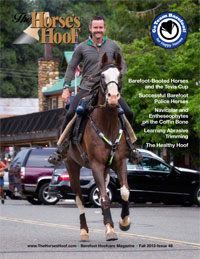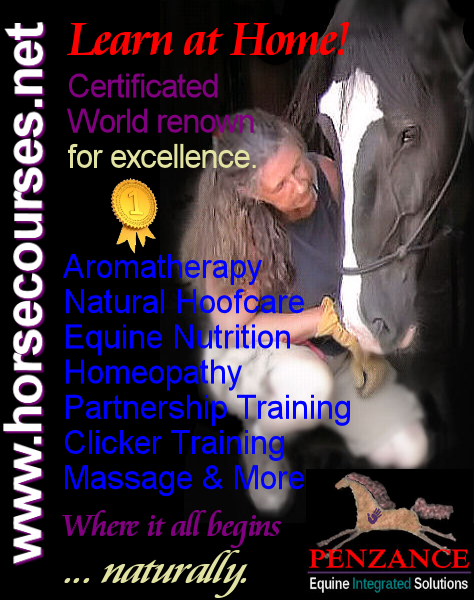“Ambitious Kate” said, — “don’t think she cares. she creates these dreamy scenarios which sell to clients woo woo and looks for written substantiation that what she is doing is good for the horses. If she can get people on a bb to say, wow, then it bolsters her business model – which must be something like “if I can attach the word healthy and natural to it, it can be sold”. So she does it – feeds nuts, berries and salads all natural, (naturally destroys their metabolism) free choice hay to self regulate – all natural – (natural founder and laminitis) let them eat what they like, natural,(natural diabetes) give them homeopathic remedies, natural (natural neglect)”.
Folks, there are myriads of people out there who are blind to the real effects of ‘natural’ products.
People who know me, friends, family, clients, know that I ‘care’ greatly – about many things including horses. They’re in my blood. And to those who have listened over the years and stuck by me … Thank you. But I need to do a bit of ‘damage control’ at this point due to the absolutely INSANE forum discussion that has taken place for over 10,000 readers on a well known board. The discussion(s) resemble shark feeding time with one or two people being thrown out for shark bait. (I”m not the only bait on that board but the sharks seem to return to the feeding grounds over and over again.) I don’t LIKE being shark bait! But in reality, the discussions are perfect examples of ‘herd mentality’ … and its really pretty frightening! It frightens me to actually witness how quickly a ‘herd’ can gather. It’s equally frightening to see/read how quickly the momentum of bullying and nastiness builds up in the ‘herd’. Wow!
But to address just this one post — Yes, I do feed nuts, berries and ‘salads’ consisting of raw vegetables and fruits. What does the feral horse eat? What is available to them in their own regions. For instance:
In tropical regions one might find acacia trees whose leaves, flowers and pods are edible and sweet and full of fiber. One might also find banana trees with its deliciously sweet, potassium filled fruits. During certain times of the year grasses are sparse in these regions while in others it is abundant. In desert areas one finds aloe, barrel cactus and other cacti whose properties are both medicinal and valuable as feed. In the colder climates vegetation is seasonal such as apples, peaches, blueberries, and the like. On the shorelines there are various species of seaweed and beach roses. The feral horses have a virtual smorgasbord of nutritious forage at their disposal during seasons. All with individualistic properties for vitamins, minerals and healing properties.
To say that nuts, berries and ‘salads’ destroy a horse’s metabolism is totally ignorant of the base makeup of the horse. Horses are HERBIVORES. By definition “herbivore” means …
(Life Sciences & Allied Applications / Zoology) an animal that feeds on grass and other plants.
By definition, plant is (Life Sciences & Allied Applications / Botany) any living organism that typically synthesizes its food from inorganic substances, possesses cellulose cell walls, responds slowly and often permanently to a stimulus, lacks specialized sense organs and nervous system, and has no powers of locomotion
So, a horse is an animal that is herbivorous and feeds on grass and other plants.
And yes, I do feed free choice hay as much as I can (and as I explained in the pertinent discussion on the forum) … 6 equine (and one senior donkey and one senior goat) share the following as of right now, in this heat wave. … ONE bale of 2nd cut, 8% NSC, hay in the am (weighs approx. 50#) and ONE bale at night. For all. (and to CMA I’ll state that I did post I feed out 1 1/2 bales in the AM and 1 1/2 bales in the PM for all. But not when the temps are in the 90’s at night and high 70’s – 80’s at night. When they drop down to the 70’s during day with normal humidity and 50’s/60’s at night then I’ll start with the extra 1/2 bale again.) As I also stated and just so its clarified, for cooler weather I add MORE HAY. Hay is what feeds the equine furnace and helps to keep their thermoregulation at peak as well as keeping their gut motility in good shape. H.A.Y. is for horses …
To say that I feed ‘all natural’ to cause ‘ natural founder and laminitis’ .., I might add that the ONLY time I’ve had a horse go laminitic is when I was feeding PROCESSED BAGGED FEED to the horses. That was in 2010 when one of my ponies was eating an excess of hay extender pellets because he’d get into one of the standard horses area to do so. In 1999, when we first moved here to the farm, I fed processed grain and two of my horses went laminitic. However, I believe that was a combination of mechanical hoof failures due to inadequate hoofcare by unknowledgeable farriers – one who continually said, “Oh, its just a bit of white line disease. Nothing to worry about.” I then got ahold of Marjorie Smith and got them squared away. Since I’ve owned my own horses since 1986 or 7, those are the ONLY cases of laminitis that we’ve had in our herds. Let me recapitulate …
LAMINITIS IN 2 HORSES CAUSED BY MECHANICAL ERROR (poor trimming/hoof form and function) 1999 (and horses were eating processed grain.)
LAMINITIS IN 1 PONY from over indulgence of PROCESSED FEED.
“Natural Foods causing natural diabetes” … Suffice to say if this were the case then ALL FERAL HORSES WOULD BE DIABETIC.
If one is familiar with the treatment for human diabetes type 2 then one would know that these people are advised to eat FRESH, RAW, VEGETABLES.
Tulane epidemiologist Dr. Lydia Bazzano says, “Based on the results of our study, people who have risk factors for diabetes may find it helpful to fill up on leafy greens like lettuces, kale and spinach and whole fruits, like apples, bananas, oranges and watermelon rather than drink fruit juices, which deliver a big sugar load in a liquid form that gets absorbed rapidly.”
Intake of Fruit, Vegetables, and Fruit Juices and Risk of Diabetes in Women
- Lydia A. Bazzano, MD, PHD1,
- Tricia Y. Li, MD, MS2,
- Kamudi J. Joshipura, BDS, MS, SCD3 and
- Frank B. Hu, MD, PHD4
+Author Affiliations
1Department of Epidemiology, Tulane University School of Public Health and Tropical Medicine, New Orleans, Louisiana
2Department of Nutrition, Harvard School of Public Health, Boston, Massachusetts
3Department of Epidemiology, Harvard School of Public Health, Boston, Massachusetts, the University of Puerto Rico, Medical Sciences Campus, School of Dentistry, San Juan, Puerto Rico, and the Harvard School of Dental Medicine, Boston, Massachusetts
4Departments of Nutrition and Epidemiology, Harvard School of Public Health, Boston, Massachusetts, and the Channing Laboratory, Brigham and Women’s Hospital, Harvard Medical School, Boston, Massachusetts
- Corresponding author: Lydia A. Bazzano, lbazzano@tulane.edu
Abstract
OBJECTIVE—The purpose of this study was to examine the association between fruit, vegetable, and fruit juice intake and development of type 2 diabetes.
RESEARCH DESIGN AND METHODS—A total of 71,346 female nurses aged 38–63 years who were free of cardiovascular disease, cancer, and diabetes in 1984 were followed for 18 years, and dietary information was collected using a semiquantitative food frequency questionnaire every 4 years. Diagnosis of diabetes was self-reported.
RESULTS—During follow-up, 4,529 cases of diabetes were documented, and the cumulative incidence of diabetes was 7.4%. An increase of three servings/day in total fruit and vegetable consumption was not associated with development of diabetes (multivariate-adjusted hazard ratio 0.99 [95% CI 0.94–1.05]), whereas the same increase in whole fruit consumption was associated with a lower hazard of diabetes (0.82 [0.72–0.94]). An increase of 1 serving/day in green leafy vegetable consumption was associated with a modestly lower hazard of diabetes (0.91 [0.84–0.98]), whereas the same change in fruit juice intake was associated with an increased hazard of diabetes (1.18 [1.10–1.26]).
CONCLUSIONS—Consumption of green leafy vegetables and fruit was associated with a lower hazard of diabetes, whereas consumption of fruit juices may be associated with an increased hazard among women.” (bold italics mine.)
To address Ambitious Kate’s statement that “Natural” means “Natural Neglect” … well, that’s just plain silly. The statement was pointed out because I use Herbs and Homeopathics as our main health care. She neglected to read in the discussion(s) where I have been very pointed in stating that I work with veterinarians on a regular basis in my work (hoofcare; primarily pathological hooves) and in my website(s) I state …” The information in this web site is presented for the educational and free exchange of ideas and speech in relation to health and wellness only. It is not intended to diagnose any physical or mental condition, or to prescribe or promote any particular product(s). It is not intended as a substitute for the advice and treatment of a licensed professional. In the event that you use the information for your own health, or for your animals, you are prescribing for yourself or your animals, which is your constitutional right and for which the author of this site assumes no responsibility. The author of this website is neither a legal counselor nor a health practitioner, nor a veterinarian and makes no claims in this regard. Reference or links in this web site to any non-government entity, product, service, or information do not constitute endorsement or recommendation. This site is not responsible for the contents of any “off-site” web pages, companies or persons linked or referenced in this site. You are welcome to follow the links and visit the various websites and determine for yourself if the products are for you.”
So, Ms. Ambitious Kate, Deltawave, MistyBlue et al … take it from there. I will not be back ‘on board’ but since a few of you have taken it upon yourselves to google and search and stalk the forums in which I participate, copy and post my statements to back up your vile, immature, rude, uncivil and bullying rantings and spins to those who disagree with you, threaten to call animal authorities and throw around dangerous threatening words such as ‘negligent’ and ‘abusive’, … all because you don’t agree with the more natural practices of horsekeeping … more ‘power’ to ya. As I said, I’m done. So done. But only with that forum, with those of you who don’t like the way others do something and proceed to try to tear those people down. And might I add that to see that PROFESSIONAL DRS. (really? A Cardiologist with over 32,000 posts on a forum? Really? How does a Cardiologist find that much time to hang out in horse forums?) and engineers and other PROFESSIONALS behave in such a manner is truly disappointing to me and actually rather despicable. But wait … nope, not quite done. Really, so NOT done!
You might want to review this little kindergarten ditty,
‘DO UNTO OTHERS AS YOU WOULD HAVE THEM DO UNTO YOU’.
That goes for working with horses, too.
People — on the other side of cyberspace behind another computer screen is another human being with feelings just like you have. John Lyons has a rule, a #1 rule with horses — “If what you’re about to do may cause harm to you or your horse, don’t do it!” … and I agree. I will go further on to say,
“If what you’re about to say or write may cause harm and hurt to the other person, DON’T SAY IT!”
Ours is not to tear down and destroy but to ENCOURAGE and ENLIGHTEN.
But the Lord said unto Samuel, Look not on his countenance, or on the height of his stature; because I have refused him: for the Lord seeth not as man seeth; for man looketh on the outward appearance, but the Lord looketh on the heart. – 1 Sam. 16:7
Encourage the heart of another. We all could use it now and then.
One more thing … this is MY BLOG so MY RULES! Just like in MY BARN, MY RULES! Don’t like it here? Well, I’m sorry but please close the door quietly on the way out so as not to disturb others. Thank you.











Beware the wolves in sheep’s clothing …
Sounds like you encountered a pack of wolves, rather than a herd. I do appreciate reading your articles. And my horse and I are both better off from what we have learned from you.